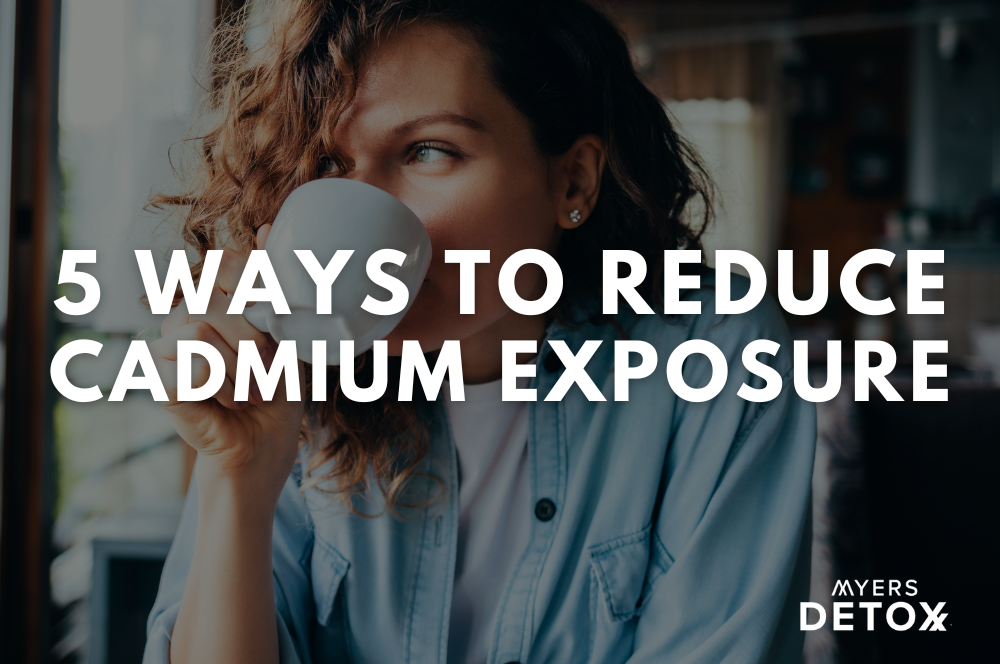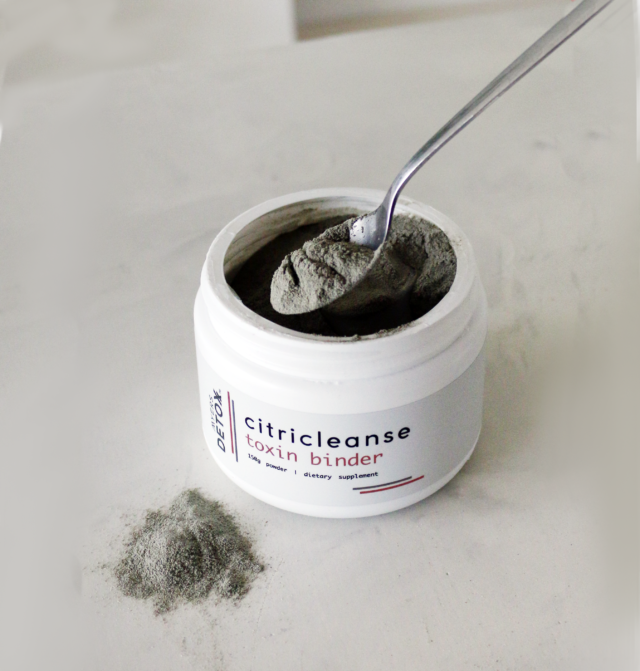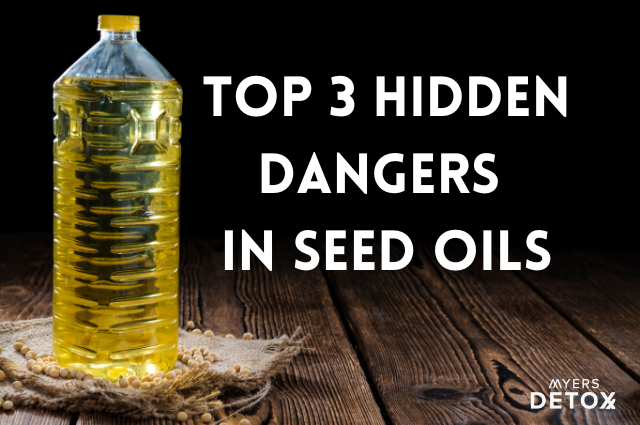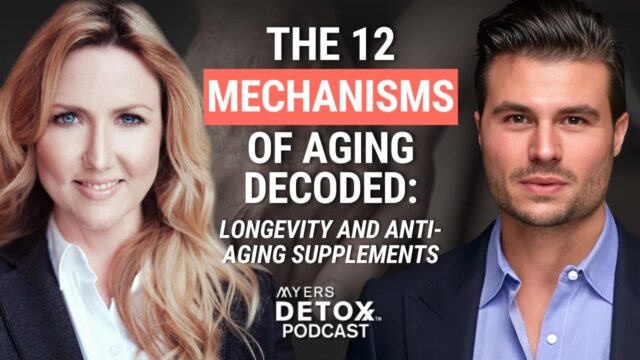Cadmium is an often overlooked but highly toxic environmental contaminant that may be slowly finding its way into your body without your awareness.
In this article, you’ll learn:
- What cadmium is and how you’re exposed to it
- The dangers of cadmium toxicity
- How this heavy metal lodges into your cells and tissues, replacing other vital nutrients
- Five ways to reduce your cadmium exposure
- The one thing you must do to relieve your body of cadmium’s toxic burden
What Is Cadmium?
Cadmium is a heavy metal that’s found throughout our environment, contaminating our food, air, and water. Although cadmium is naturally found in the earth’s crust, the primary source of exposure in our environment comes from industrial dumping, smelting, and battery production.
Due to its structure, cadmium is easily taken up by various crops, including vegetables, grains, and tobacco. In fact, cigarette smokers are one of the populations at the highest risk for cadmium toxicity[1].
But that doesn’t mean if you don’t smoke cigarettes, you’re safe from cadmium exposure. Far from it. Due to its wide presence in our environment, everyone needs to be aware of the potential dangers of cadmium.
Cadmium Replaces Essential Nutrients
One of the reasons that cadmium exposure can be so dangerous is because this heavy metal is able to replace essential minerals in your body. This means that when you have mineral deficiencies, cadmium is all too happy to come in and replace those minerals in your cells, tissues, and enzyme systems.
Of course, cadmium can’t carry out all of the functions that those minerals are responsible for, so cellular and enzyme dysfunction are what result. This is one of the reasons that maintaining a balanced diet full of minerals is so crucial to avoiding cadmium toxicity.
Health Concerns Around Cadmium
Cadmium can impact your body in numerous ways, but the most well-researched impacts of cadmium include the following:
Kidney Disease
Cadmium exposure is one the major causes of kidney disease, as the kidneys are a primary target organ for this heavy metal.
Cadmium specifically accumulates in the epithelial cells of the kidney’s proximal tubule, which is responsible for reabsorption, nutrient homeostasis, and electrolyte balance. When the proximal tubule becomes toxic with cadmium, it disrupts its activity and results in generalized reabsorptive dysfunction, which can ultimately lead to kidney disease[2].
Liver Disease
Another target organ for cadmium is the liver. Due to its ability to accumulate in your liver tissue, exposure to cadmium can result in various liver diseases, including NAFLD, NASH, and hepatic necroinflammation[3].
Osteoporosis
Studies show that cadmium exposure may be a risk factor for bone loss or osteoporosis. In fact, research shows that high levels of cadmium in the body are directly associated with reduced bone mineral density[4][1].
Although this may have to do with cadmium’s ability to replace vital minerals, studies also show that cadmium can directly impact the function of bone cells. Specifically, it appears that cadmium may inhibit the activity of osteoblasts, which are responsible for bone formation, while simultaneously stimulating osteoclast formation, the cells responsible for breaking down bone[5].
Heart Disease
Several studies have shown the detrimental impact of cadmium on heart health. In general, high levels of cadmium are associated with increased cardiovascular mortality and increased risk for cardiovascular disease[6].
More specifically, studies show cadmium’s association with[7][8][9][10]:
- Carotid atherosclerosis
- Peripheral arterial disease
- Myocardial infarction
- Stroke
- Heart failure
It’s suspected that cadmium increases endothelial permeability (the cells that line blood vessels and the heart) by promoting cellular death and prohibiting the development of new cells. This process results in the progression of atherosclerotic plaques and, eventually, heart disease[11].
Neurotoxicity and Neurodegeneration
Although the brain is not a primary target organ for cadmium, this metal can pass the blood-brain barrier, which means that your brain is vulnerable to cadmium toxicity. Once in your brain, cadmium activates pathways that enhance inflammation, oxidative stress, and cellular death[12].
Studies have linked cadmium exposure to neurotoxicity as well as neurodegenerative diseases such as Alzheimer’s and Parkinson’s disease[13].
Furthermore, research shows that cadmium can severely affect the function of the nervous system with symptoms including[14]:
- Headache
- Vertigo
- Olfactory dysfunction
- Slowing of vasomotor function
- Peripheral neuropathy
- Inability to concentrate
- Learning disabilities
5 Ways To Reduce Cadmium Exposure
Although cadmium can be found everywhere in our environment, there are steps you can take to reduce the amount of cadmium you’re exposed to regularly. Below are five tips to reduce your cadmium exposure.
#1 Stop Smoking
If you’re a smoker, add cadmium toxicity to the list of reasons you should quit smoking for good. Studies show that cadmium concentration in the body can be up to five times higher for smokers than non-smokers. This is likely due to the fact that lung absorption is much higher than other forms of absorption[15].
To make matters worse, when you smoke cigarettes contaminated with cadmium, you not only put your health at risk, but also the health of anyone that may inhale your second-hand smoke[16].
On the same note, if you’re a non-smoker who lives with someone who smokes or spends a lot of time with smokers, keep your distance while they’re lighting up to reduce your exposure.
#2 Only Drink Organic Coffee
Non-organic coffee can be contaminated with all kinds of toxins, including but not limited to heavy metals like cadmium. This is why many people find that when they switch to organic coffee beans, they feel much less anxious and don’t experience as drastic of a caffeine crash[17].
Reports show that organic coffee beans contain markedly less cadmium while also coming packed with more antioxidants. This combination is the perfect substitute for heavy-metal-contaminated coffee[18].
#3 Check Your Mineral Status
As mentioned previously, cadmium can replace essential minerals in your cells, tissues, and enzyme systems. This is one of the ways in which cadmium exerts its toxic effects throughout your body.
Studies show, however, that sufficient levels of minerals like iron, calcium, magnesium, and zinc can impede dietary cadmium absorption, effectively pushing this metal out by not giving it a place to lodge in your cells[19].
One of the best ways to check your mineral status is with an HTMA (Hair trace mineral analysis). This simple test will not only provide information regarding your mineral status but will also tell you what heavy metals (like cadmium) you have in your system.
#4 Buy Organic Vegetables
While smokers tend to have the highest amount of cadmium in their bodies, among non-smokers, vegans come in next. Cadmium is readily absorbed by a number of crops, including green leafy vegetables, whole grains, tubers, and root veggies[19].
Does this mean you should stop consuming vegetables? No. But you want to ensure the vegetables and grains you are consuming come from high-quality soil.
Luckily, organic crops tend to have lower concentrations of cadmium, with higher levels of antioxidants. Therefore, whenever possible, choose organic over conventional produce[20].
#5 Watch Your Organ Meat Consumption
While organ meats are packed with nutrients, the one downside is that cadmium tends to accumulate in the kidney and liver in both humans and animals. This means that when you’re consuming organ meats of animals, you may also be taking in excessive amounts of cadmium.
If you absolutely love your organ meats, it’s a good idea to cut down on the amount you’re consuming. Unfortunately, even wild game can be a source of cadmium, so 100% grass-fed and organic don’t really make a difference in this case[21][22].
Support Your Natural Detox Systems to Protect Against Cadmium
Taking the above steps will be powerful in reducing your cadmium exposure, but you likely already have levels of cadmium in your body from a lifetime of accumulation.
Furthermore, although you can certainly mitigate the amount of cadmium you take in from now on, it’s nearly impossible to avoid this heavy metal altogether. That’s why doing a detox every so often is crucial.
While there are a lot of different detox options out there, I’ve found that many of them tend to be more work than their worth, and the potency of the detoxification nutrients are rarely where they need to be in order to make a real change.
The problem with heavy metals like cadmium is that they can lodge deep into your cells and tissues, and upon release, they can create even more toxicity in your blood. For this reason, contaminants need to be removed with care and with haste by supporting your body’s natural detox mechanisms.
And when supporting your body’s natural ability to detox, it’s wise to use a binder to help ensure that pollutants are flushed out normally. This helps prevent the contaminants from being reabsorbed or redistributed elsewhere in the body.
That’s why I created CitriCleanse. The grapefruit citrus pectin in CitriCleanse is amazingly effective at aiding your body’s innate ability to mobilize and excrete these impurities.
Grapefruit citrus pectin has been processed in a way that makes its molecules small enough to cross the intestinal barrier and to get into the bloodstream. This allows the grapefruit citrus pectin to gently surround and support the excretion of contaminants that are both freely circulating in your bloodstream as well the ones that have become lodged in tissues and organs.
The best part about CitriCleanse is that while it offers an excellent way to help your body detox heavy metals, it’s also simple and easy to use. All you need to do is add a small scoop to water or juice each day, and the formula will take care of the rest.
Takeaway
Cadmium doesn’t get as many headlines as lead or mercury, but it’s just as dangerous and ubiquitous in our environment. The ability of cadmium to replace nutrients in your body makes this toxin a serious threat to your cellular health, and unless you know about the various sources of cadmium, you likely already have toxic levels in your body.
The good news is that cadmium exposure can be greatly reduced if you know what steps to take. Consuming organic vegetables and grains, avoiding organ meats, drinking organic coffee, and checking your mineral status are vital. And, of course, if you’re a smoker or are often around smokers, take care to avoid your exposure to cigarette smoke.
At the end of the day, however, you very likely will still benefit from a heavy metal detox that will assist your body in clearing any accumulated cadmium that you’ve picked up over the years. If you haven’t done a heavy metal detox lately, I highly recommend picking up a container of CitriCleanse.
*CitriCleanse is a dietary supplement and is not intended to diagnose, treat, cure, or prevent any disease. Please talk to your doctor before beginning any new supplement regimen











